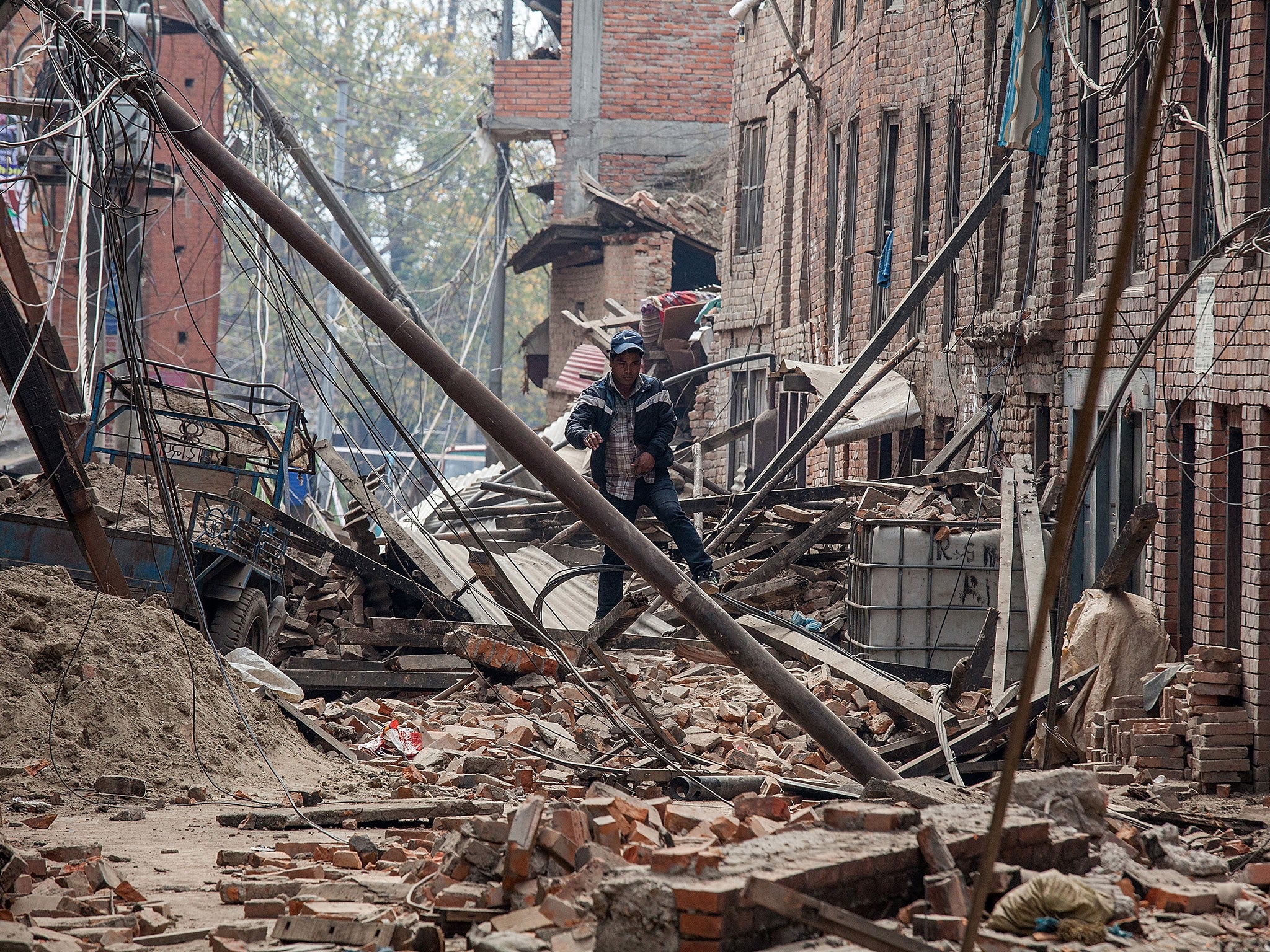Power of Nepal earthquake was equivalent to 20 huge atomic bombs
The devastation from this earthquake was much greater than usual, as the country fell victim to its biggest seismic event in 80 years

Nepal has been hit by a number of earthquakes over the years, as you might expect given its proximity to Everest and the world’s tallest mountain range created by the collision of two giant tectonic plates.
But this time, the devastation was much greater than usual, as the country fell victim to its biggest seismic event in 80 years.
The first problem was the power of the quake, coming in at magnitude 7.8, which one expert described as similar to having 20 thermonuclear hydrogen bombs – each many times greater than the atomic bomb that devastated Hiroshima – ripping through the Kathmandu Valley.
Second, the epicentre of the earthquake was only 40 miles to the north-west of the most highly populated part of Nepal, the capital city of Kathmandu.
Further compounding the impact was the shallowness of the earthquake, at just 10 to 15km below ground, meaning that the shaking was felt much more strongly. Deeper quakes have more earth to absorb the shaking.
Earthquakes are typically followed by a flurry of aftershocks, which tend to reduce in strength and frequency as time goes on. These can be
felt hundreds of miles away. One such aftershock occurred just half an hour after the main earthquake, with a magnitude of 6.6, and more than 20 others have followed since.
The concern is that, although the magnitudes deteriorate, they can continue to inflict significant damage on buildings already weakened by previous activity.
Nepal is particularly susceptible to earthquakes because of its position at the junction of the two giant tectonic plates that push Everest and the rest of the Himalayan mountain range a few millimetres higher every year.
The upward climb of the world’s highest mountain range is accompanied by numerous tremors as one giant slab of rock – the Indian tectonic plate – moves northwards at a rate of two inches a year, pressing up against another great slab – the Eurasian tectonic plate – in the process, which geologically speaking is very fast.
As the plates push against each other, friction generates stress and energy that builds until the earth’s crust ruptures. It is this movement that triggered the quake.
However, although the quake has caused colossal damage, it could have been even worse. Most areas touched by the earthquake lie on solid bedrock, which to an extent limits the amount of shaking – with the exception of the Northern Plains, near the Nepalese border, where the surface sands and silts shook more than the solid rock elsewhere.
Join our commenting forum
Join thought-provoking conversations, follow other Independent readers and see their replies
Comments